Ten Things To Do in France When You Visit
Things to do in France It has been said that ‘no other nation on the planet approaches France in its subtle and seamless blend of the old and the new; the industrial and the pastoral’. Odyssey…
6 Nov 17 · 11 mins read
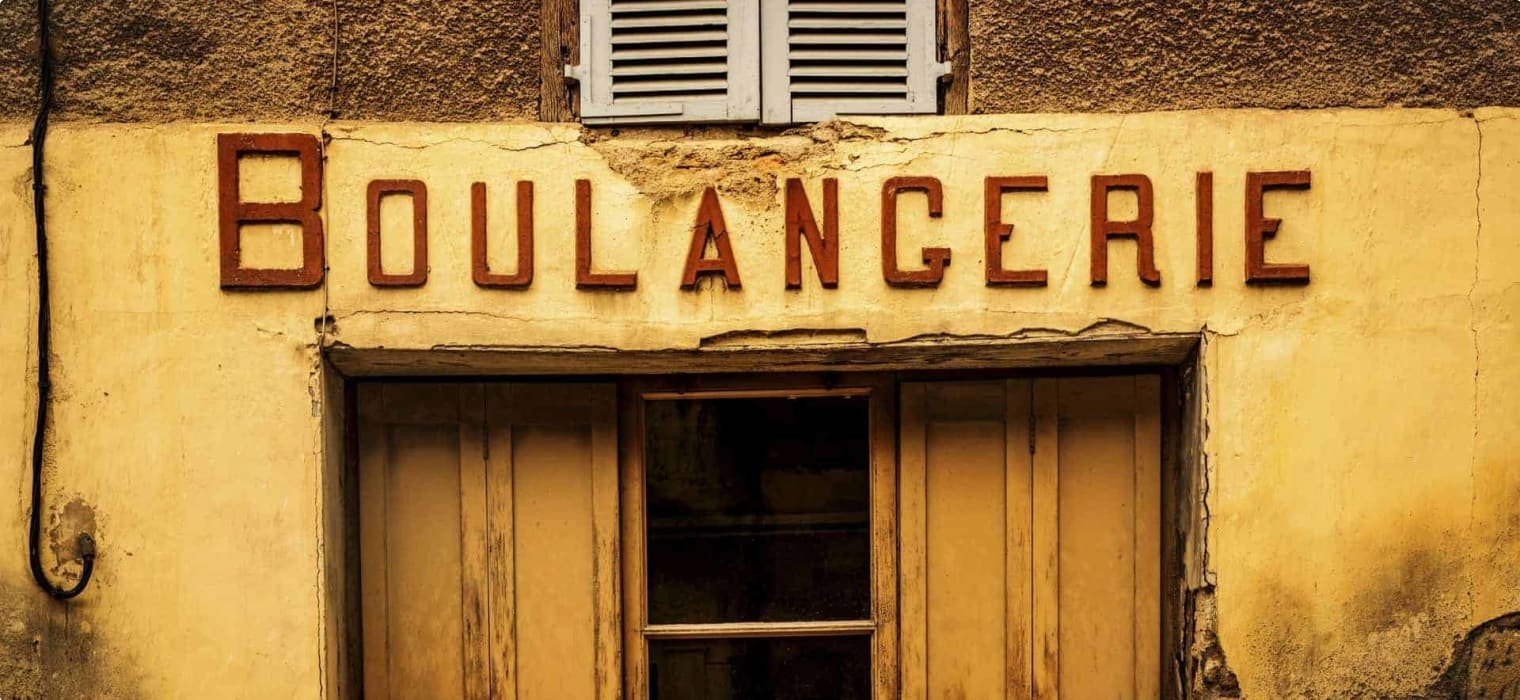
Things to do in France
It has been said that ‘no other nation on the planet approaches France in its subtle and seamless blend of the old and the new; the industrial and the pastoral’.
Odyssey Traveller's guided tours for mature and senior travellers explore France's varied scenery and sights. Our experienced guides share their knowledge of things to do in France, exploring the county's rich history and culture. We experience its regional cuisine and wines. Our hope is that travellers return home with a better understanding of the people, their heritage and the reasons for their ability to blend the customs and ways of traditional village life with the challenges of one of the world’s more advanced urban economies. And perhaps, a few words of French too!
We hope the following information about the top things to do in France will be useful and may well stimulate you to search more widely and cultivate particular interests in France. Odyssey aims to turn tourists into travellers. Book your France tour with the specialists in educational travel. For all Odyssey's French tour packages click here. If you’re keen to experience our guided tours of France, please call or send an email. We'd love to hear from you!
Read on for our Top 10 Things To Do in France, and be sure to share your own suggestions in our comments section!
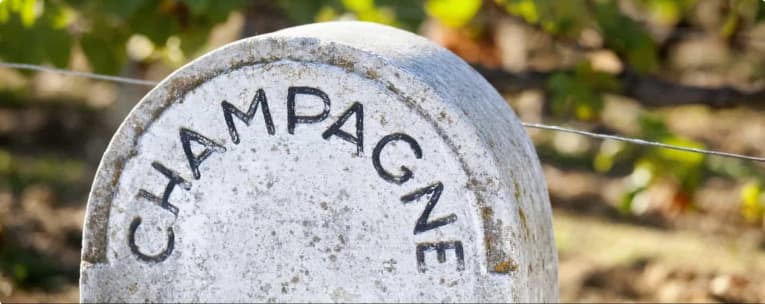
1. Taste le champagne
For many, France is synonymous with great wines and regional cuisine. Perhaps the most world-renowned of all is their champagne. The region of la Champagne lies to the east of the Île de France. The dry, chalky soil to its West provides excellent drainage. Its mild winters and long hours of sunshine combine to provide the perfect conditions for vines to flourish on its sunny slopes.
The actual area of wine-growing in Champagne extends over a narrow hilly strip some 150 kilometres long by 2,000 metres wide. Cellars used for the making and storage of champagne are artificial caves. Dug out of the local chalk, some of these date from Roman times. The caves are often 25 to 30 metres deep. They tend to be bottle-shaped, with a narrow opening at the top and widening out at the bottom. The total length of these caves is estimated to be in excess of 200 kilometres. They maintain a constant temperature, ideal for the maturing of fine wines.
The méthode champagnoise
No wine can be called champagne unless it comes from statutorily-defined growing areas with a particular quality of soil. Sparkling wines from other parts of France may only be designated vins mousseux, and then only if they are produced in strict accordance with the champagne method – méthode champagnoise.
The vineyards and cellars of the Champagne region are a must-see on your tour of France. Be sure to stop in for a tasting, and pick up a bottle or two while you're there!

2. Visit Avignon, a medieval walled city
Avignon was a thriving town in the Roman times. Subsequent invasions from the Burgundians and Franks led to its impressive fortifications. The whole of the old town is surrounded by a complete circuit of walls. These span 4.8 kilometres, and feature 8 gates and 39 towers. The walls, built between 1350 and 1368, have been heavily restored, meaning travellers can experience this medieval city in its imposing glory. Located in Provence, Avignon is a picturesque stop on your South of France tour.
3. Walk the chalky cliffs and learn history in Normandy
Normandy, in north-western France, features steep, 100-metre high cliffs (falaises) of the Pays de Caux (the “land of chalk”). These abruptly halt the land at the English Channel. Normandy can be divided into upper and lower regions, each with distinctive landscapes and topography. Acting almost as an intermediate region between Upper and Lower Normandy is the département of Calvados. Here, the valleys seem gentler and fields are delineated with neat hedges.
Lower Normandy has two distinct parts. The Cotentin Peninsula is part of the ancient Armorican rock massif which forms the backbone of both Normandy and Brittany. It is very different from the rest of Normandy and both physically and topographically more in character with Brittany or Cornwall than with the pastoral and wooded countryside of much of Normandy. It is wilder, bleaker and starker and has fewer trees but more heath-land. The coastline of north-west Normandy is much indented with rocky inlets; in the east it is flat and sandy with the world-famous tides experienced at places like Mont St-Michel. While exploring diverse Normandy, be sure to visit its rugged and distinctive coastline.
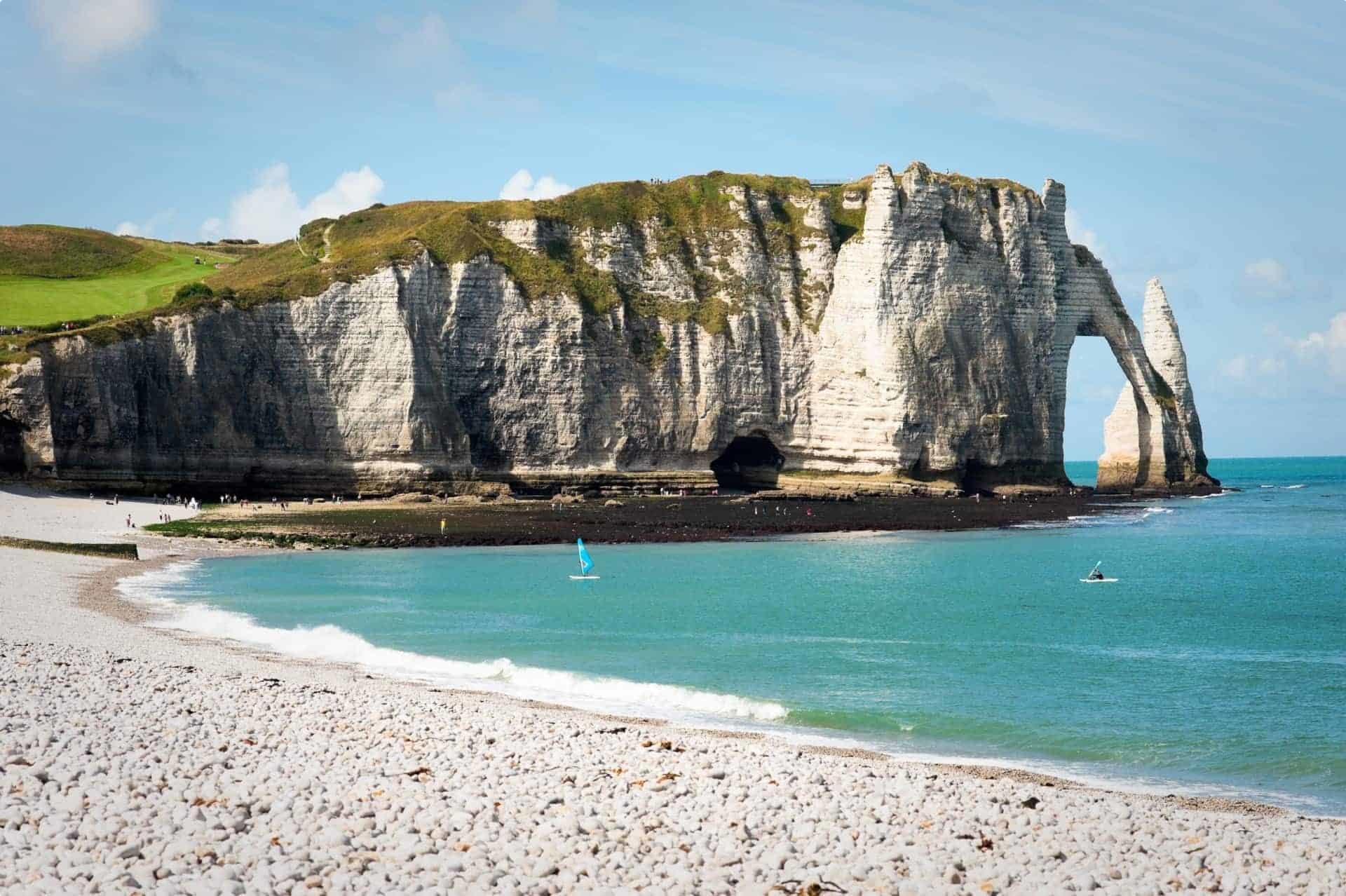
Normandy's dramatic history
Conquered by Julius Caesar in 52 BC, Normandy became a Roman province. During the 4th century AD, the raiding Germanic tribes from the north-east eventually overcame the Roman legions. They incorporated the area into the Merovingian kingdom of Neustria.
Clovis, King of the Franks, came to power, introducing Christianity to the region. During the 9th century the Norsemen (Vikings) led annual raids to rape, pillage and destroy. In 911 one of their leaders, Rollo, signed a treaty with the French King, Charles the Simple, founding a Norman duchy. After the Battle of Hastings in 1066, William the Conqueror (Duke William of Normandy) became King of England and Normandy became part of a larger Norman/English Domain. It reverted to France in 1204 when it was re-taken by Philippe Auguste.
The Hundred Years War gave the English brief possession at various times. However, in 1450 Normandy finally returned to France and the Dukedom ceased in 1469. The 17th century saw much of the exploration to the New World depart from the ports of Normandy.
Although it escaped the ravages of the First World War, Normandy did not fare well during the Second. As the Germans advanced to the coast in 1940, much was bombed or burnt to the ground. It was also the scene of the Allied Landings in 1944 when very few towns in Lower Normandy were left intact. Normandy is a fascinating part of France for history buffs.
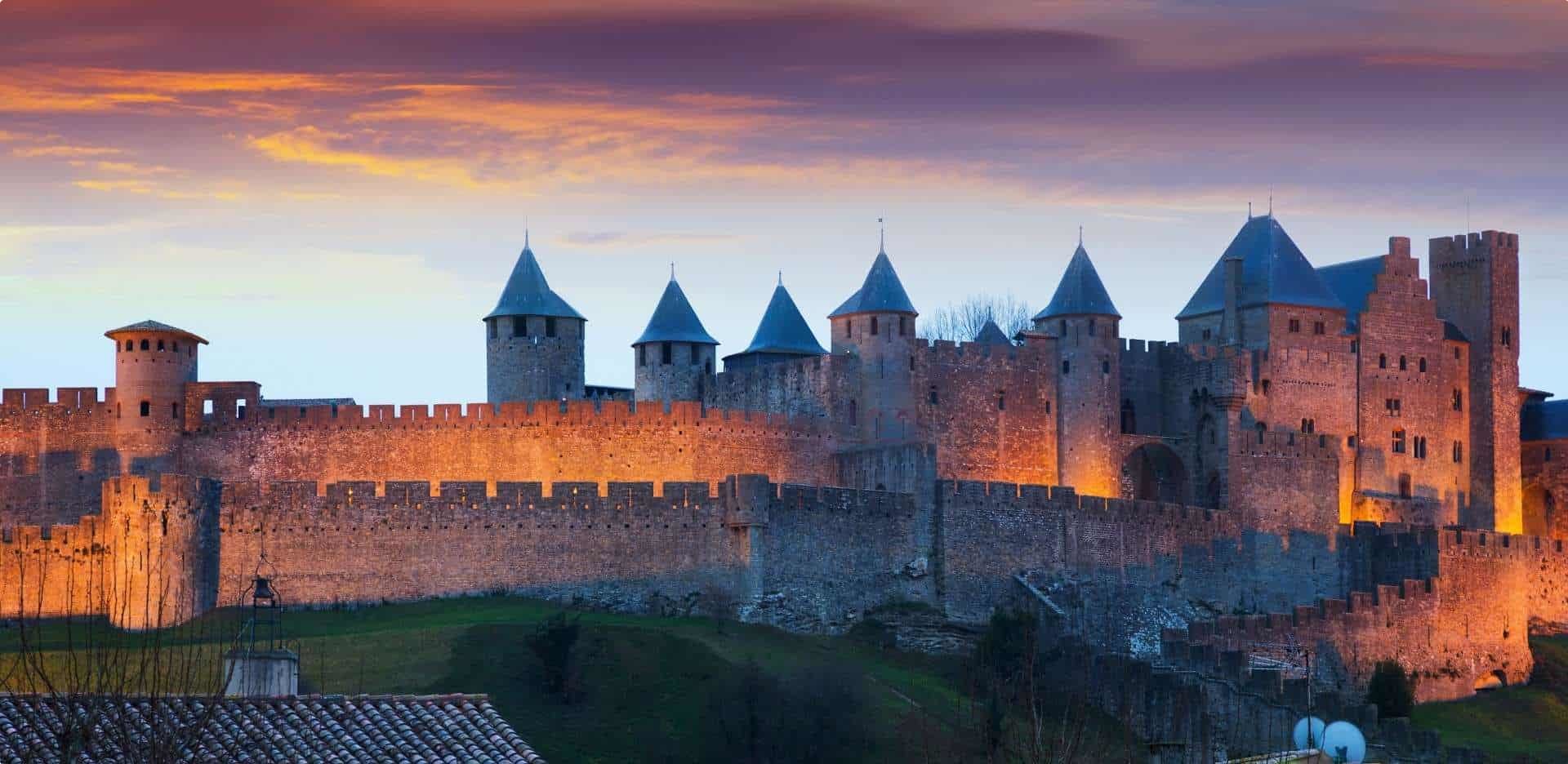
4. Visit Carcassonne at the foot of the Pyrenees
Carcassonne lies in the foothills of the Pyrénées. In fact, it is two towns, divided by the River Aude. The Upper City (La Cité), the more famous part, is a walled city with a fairytale collection of towers, drawbridges and winding medieval cobbled streets. It was declared a UNESCO World Heritage Site in 1997. Tourism and wine trade form the basis of Carcassonne's economy.
Carcassonne’s position, on an ancient route from the Atlantic Ocean to the Mediterranean Sea, ensured its early importance. Built and fortified originally by the Romans in 1st century BC, it was progressively taken by the Visigoths (6th century AD), the Saracens (7th century), and the Franks (8th century). Then, during the Albigensian Wars of the 12th and 13th centuries, it was conquered by Simon de Montfort and the Crusaders. It became a seat of the dreaded Inquisition.
In 1229 the town fell to the French Crown, remaining unscathed until the French Revolution. Restoration by Viollet-le-Duc in the 19th century has been the subject of much controversy, as we will learn on our guided tour of the city in La Belle France. Make sure you see the fortress within the fortress: the Castle of Carcassonne.
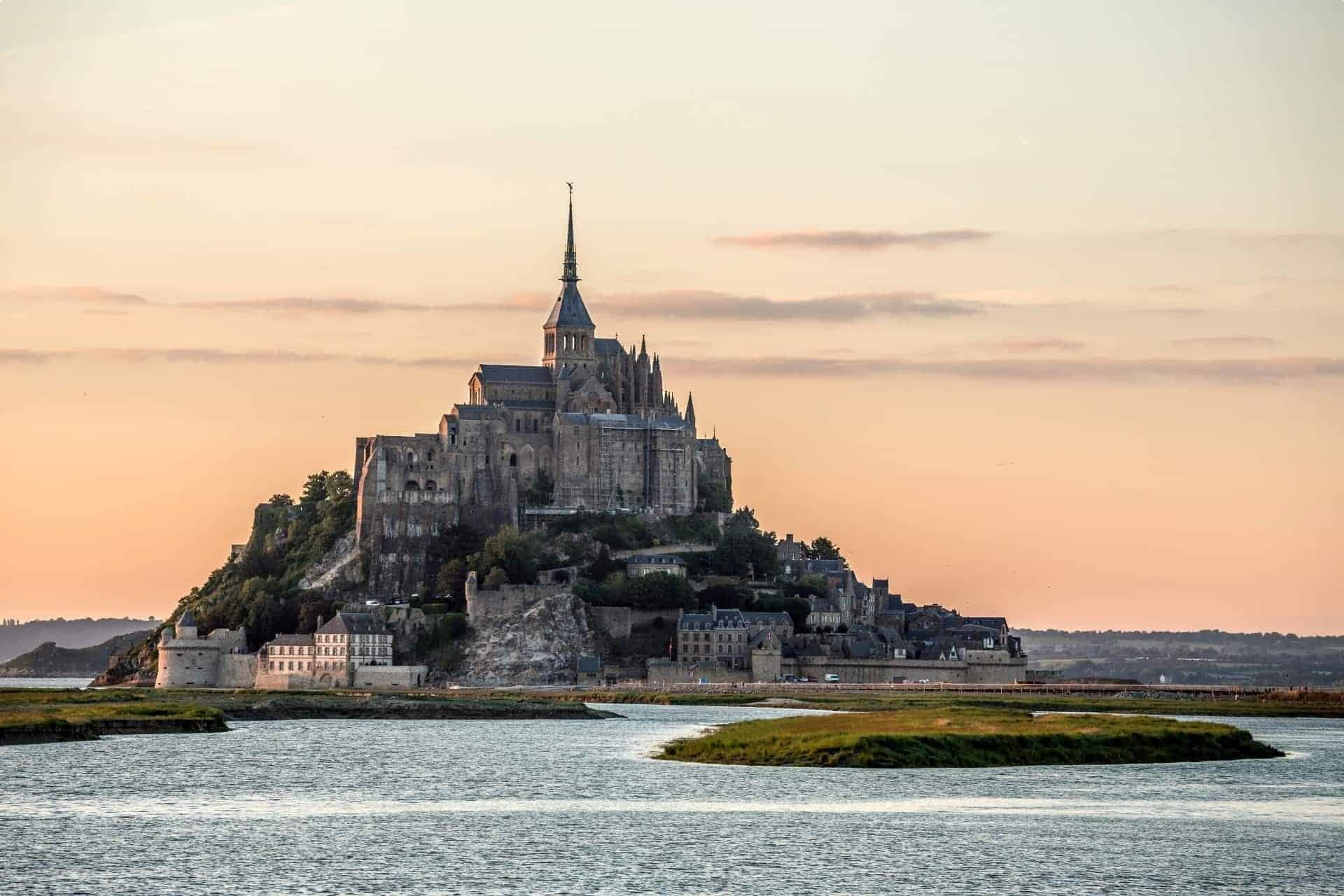
5. Photograph Mont Saint Michel
Originally Mont St Michel was called Monte Tombe, from the Latin tumba, which means both mound and tomb. A few Christian hermits settled on this rock in the 6th Century and built two sanctuaries there. One was dedicated to the first Christian martyr Saint Stephen, and the other to the martyr Saint Symphorian of Autun.
The introduction of the cult of Saint Michel to Mont Tombe is reported in a 9th Century manuscript, the Revelatio Ecclesiae Sancti Michaelis. According to this text, in the year 708, a bishop of Avranches named Aubert dreamt that the Archangel commanded him to build a church in his honour on the rock. Aubert doubted this vision. His heavenly host was obliged to visit him on three separate occasions. He had to go so far as to drill a hole in the bishop’s cranium with his finger in order to convince him.
The chapel he built was a replica of Monte Gargano, a cave shrine in southern Italy where Saint Michel is said to have appeared in 492. Mont Tombe contained no cavern. So, Aubert erected a crude structure reminiscent of an Italian grotto. Owing to the prevailing insecurity of the Merovingian period, the cult of the tutelary archangel spread rapidly and worshippers flocked to Mont Tombe to place themselves under his protection. Soon it became known as the Mont Saint Michel, one of the leading pilgrimage sites in Medieval Europe. Today, its picturesque position atop a mound makes it a stunning photographic subject. Experiment with time of day and lighting in order to capture its stark beauty.
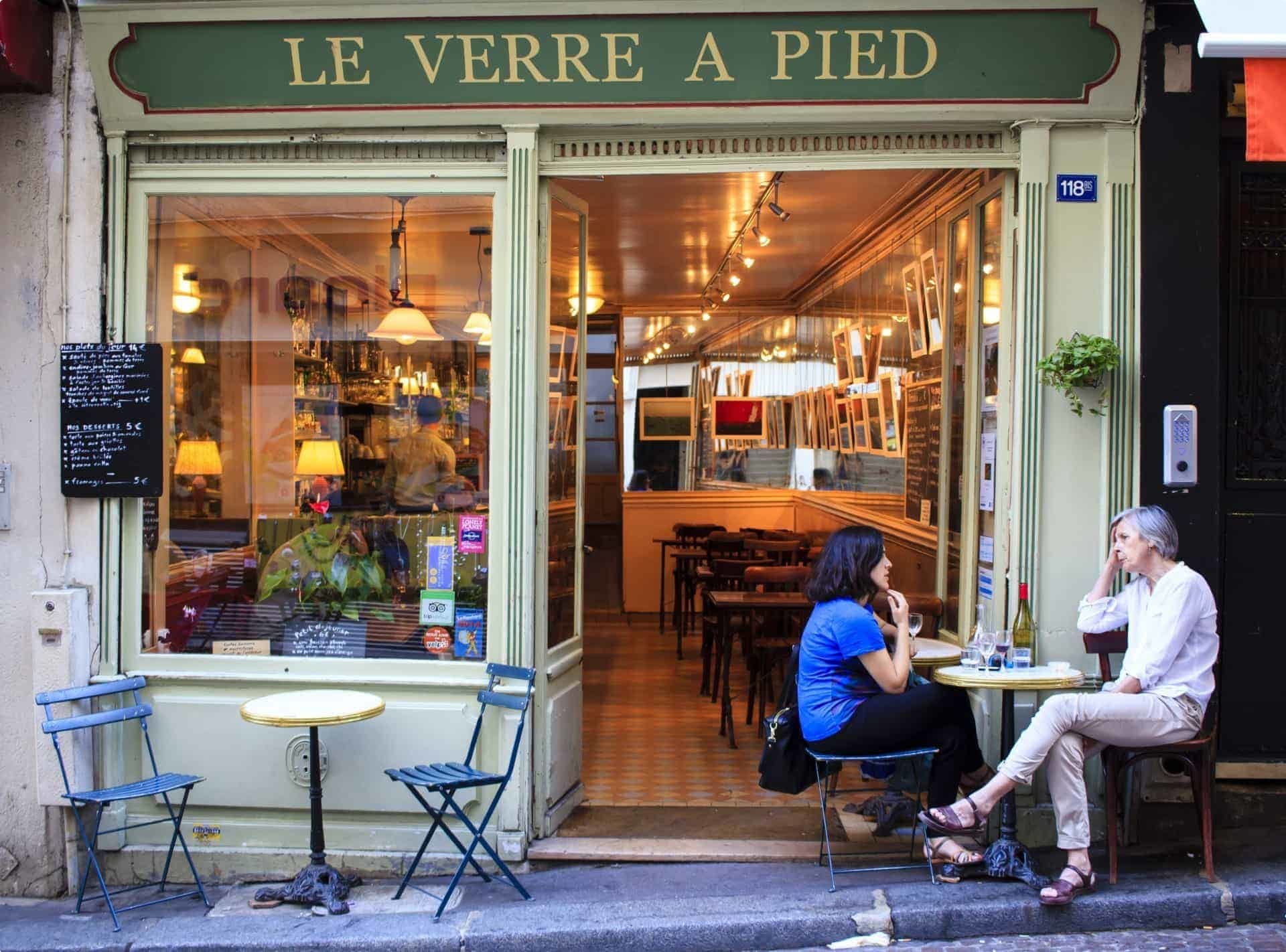
6. Walk the streets of Paris
No tour of France would be complete without a stay in Paris. The Eiffel Tower is, of course, the city's most famous attraction. The Eiffel tower was built in 1889 for the Paris World Fair. But a Paris 2018 tour with Odyssey Travellers will have you living like a local. And the local knowledge of our experienced guides will provide you with unique insights beyond the usual tourist attractions of the River Seine & surrounds. For example, the central sections of Paris, like those of many European cities, were built up long before any particular need was felt for open or recreational space. This circumstance, together with the height restrictions on buildings, has resulted in an unusually low ratio of ‘green space’ per inhabitant.
The largest areas of open space today are those that were protected from development by their status as royal preserves. Most noteworthy amongst these is the Bois de Boulogne, a tract of heavily used woods, trails, lakes and sports grounds located on the city’s western edge. This park is mirrored just beyond the eastern city limits by the Bois de Vincennes, which contains a zoo, a floral garden and several museums.
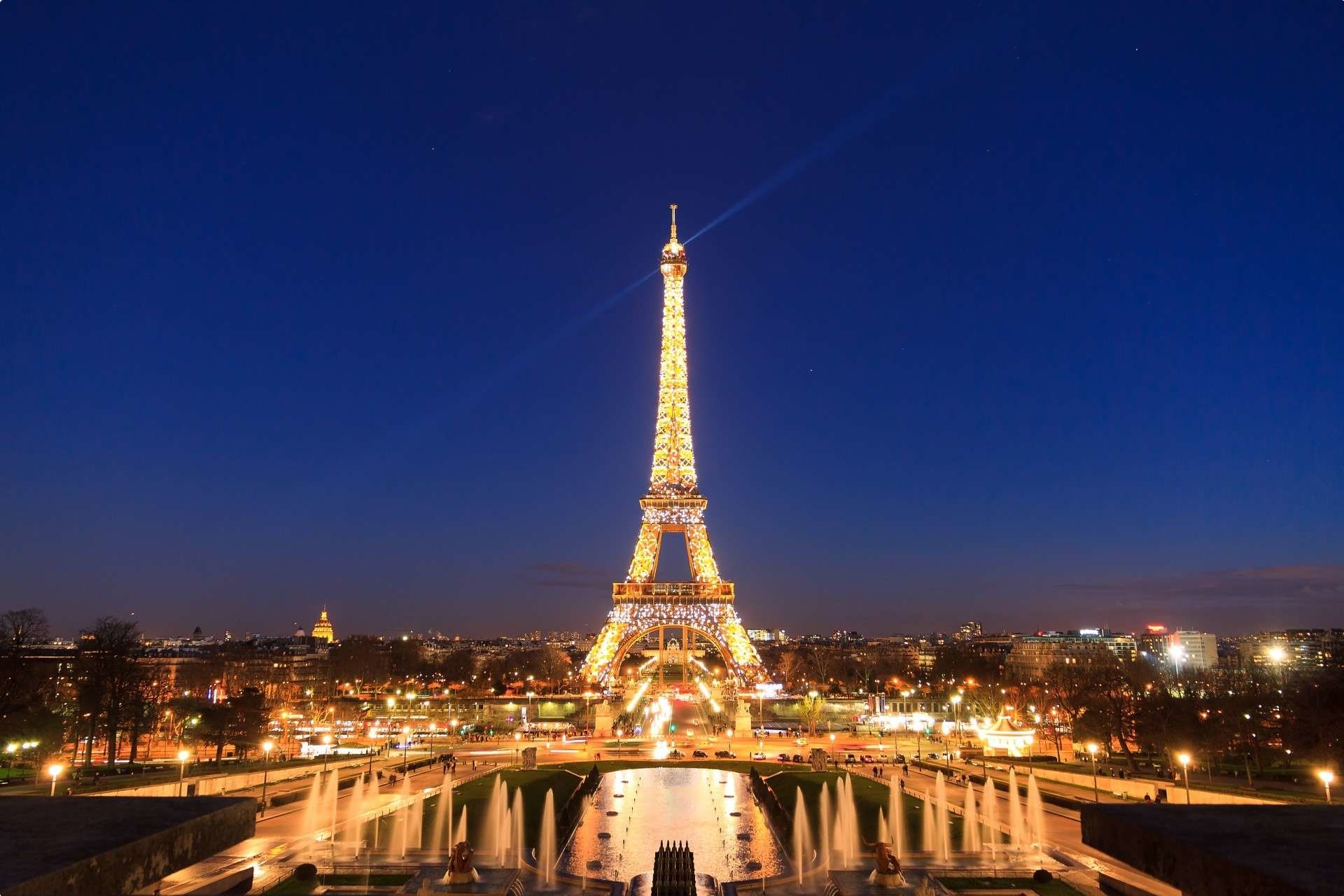
Parisian architecture
The monumental architecture of Paris reflects its long history, and its political and cultural status. Among the most important older constructions are:
- the Cathédrale de Notre Dame on the Île de la Cité, which was begun in 1163;
- the nearby Sainte-Chapelle, a magnificent 13th-century Gothic structure;
- the Hôtel de Ville (town hall);
- the Louvre, originally designed as a garrison fortress;
- Les Invalides, built as a soldiers’ home by Louis XIV and now housing Napoleon’s tomb;
- and the Place de la Concorde, laid out in the 18th century.
Baron Georges Haussmann redesigned Paris during the mid 19th century. Several grandiose projects were undertaken to emphasise the city’s significance. Accordingly, the Arc de Triomphe, the Opéra, the Place de l’Opéra, the Place de l’Étoile (now Place Charles de Gaulle) and many of the broad avenues date from this time.
Subsequently, several constructions took place in the transition to the twentieth century. These include the Eiffel Tower. The Basilica of the Sacré Coeur, on the summit of Montmartre, was completed in 1910. High rise apartment buildings and some truly stunning museums lend a contemporary feel to Paris's cityscape. Wander the cobbled streets here and you will find French history brought to life.
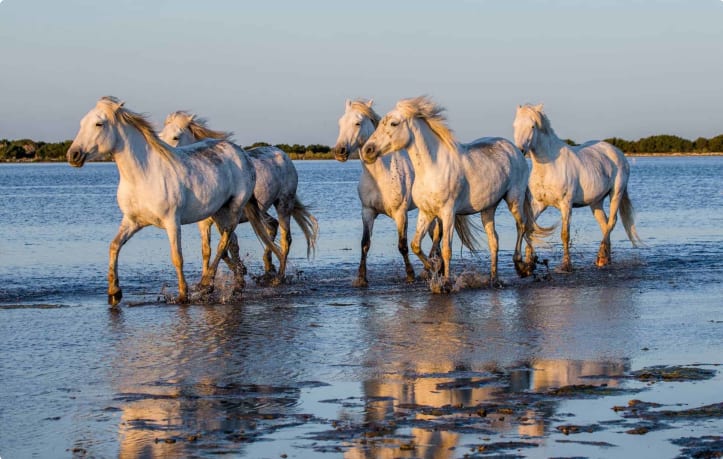
7. Spot the wildlife of the Camargue
Of course, rural France is equally impressive, and draws intrepid travellers from around the world. On our Senior Travellers guided educational small group rural tour of France, we explore the Camargue. This natural region on the Mediterranean coast is separated from the rest of France by 140,000 hectares of wetlands, pastures, dunes, and salt flats. It is home to unique and important wildlife. Travellers to the Camargue may be fortunate enough to see wild, white horses, black bulls, and flamingos. Such an encounter would be truly memorable and unique.
8. Take the TGV to Tours
Tours is the bustling capital of Touraine, an agriculture and wine region. St-Gatien brought Christianity to the region during the Roman period. In the 4th century the preaching of St-Martin made Tours an important religious centre and a centre of pilgrimage. In 732 the Arabs reached as far as Tours before Charles Martel defeated the advance from Spain into France at the Battle of Poitiers. The silk-weaving trade brought huge prosperity to the town during the 15th and 16thcenturies. The industry employed about 75% of the population during this time. The delightful half-timbered houses in the centre of the town are the result of this wealth.
The rolling, green pastures and quaint architecture of this town can be accessed by France's TGV. The high speed Train à Grande Vitesse crosses the picturesque valley of kings in the Loire Valley. Odyssey Traveller's French History by Rail European small group short tour includes a stop in Tours.
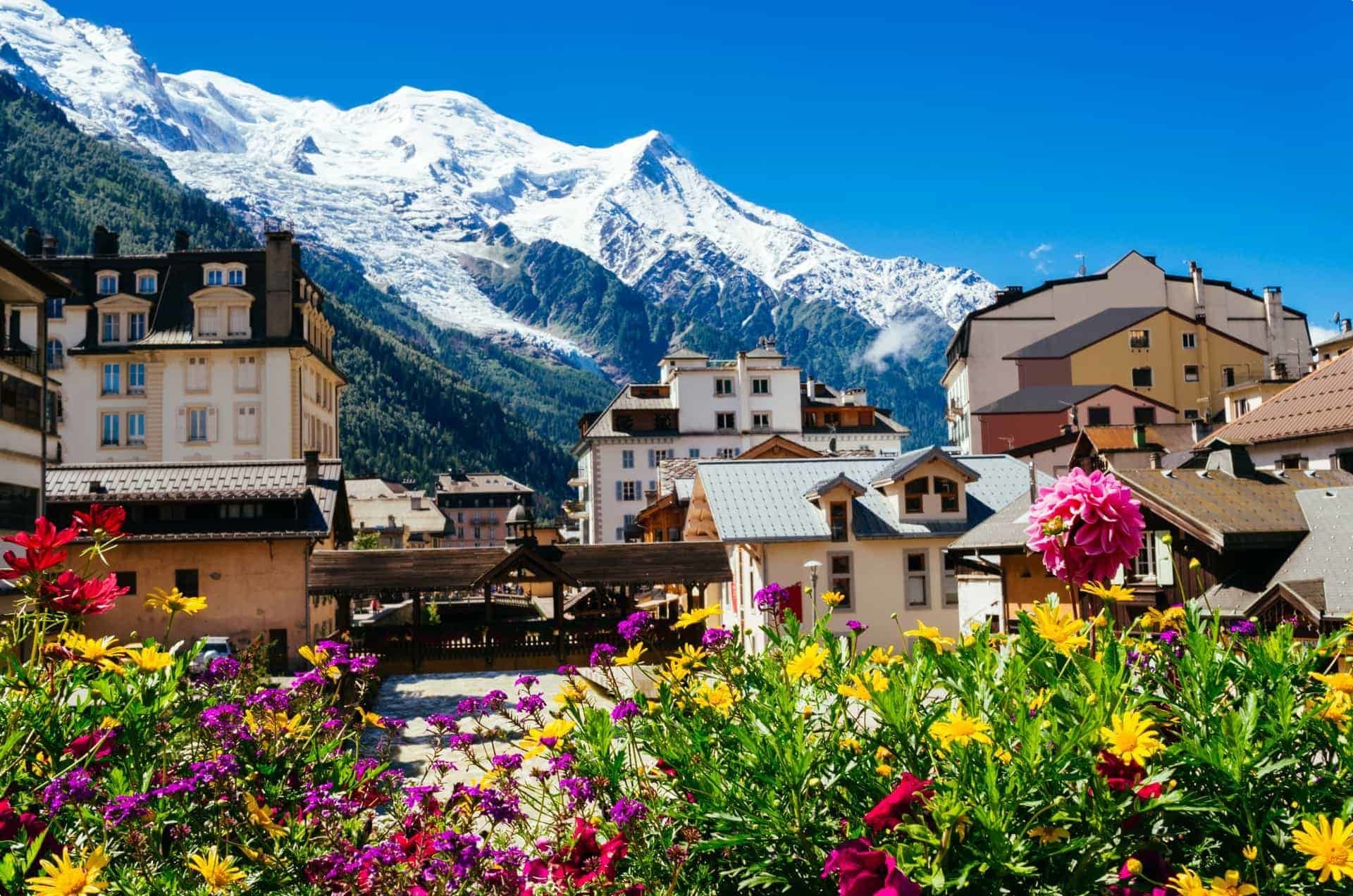
9. Walk Mont Blanc Massif at Chamonix
Chamonix-Mont-Blanc (usually shortened to Chamonix) is a resort area near the junction of France, Switzerland and Italy. It is located at the base of Mont Blanc, the highest summit in the Alps. Chamonix is one of the oldest ski resorts in France. Year-round, cable cars take visitors up to several nearby peaks with beautiful, panoramic views, including Aiguille du Midi above town, and Pointe Helbronner, across vast glacier fields on the Italian border.
On Odyssey Traveller's Secret France small group tour places of cultural interest for seniors, we will visit Chamonix. We check out the picturesque Montenvers rack-railway which runs from the town to an altitude of 1913 metres. From its upper terminus, we can walk on a small part of the Mont Blanc Massif and, if conditions permit, those adventurous enough have the opportunity to visit the cave carved inside the Glacier itself.
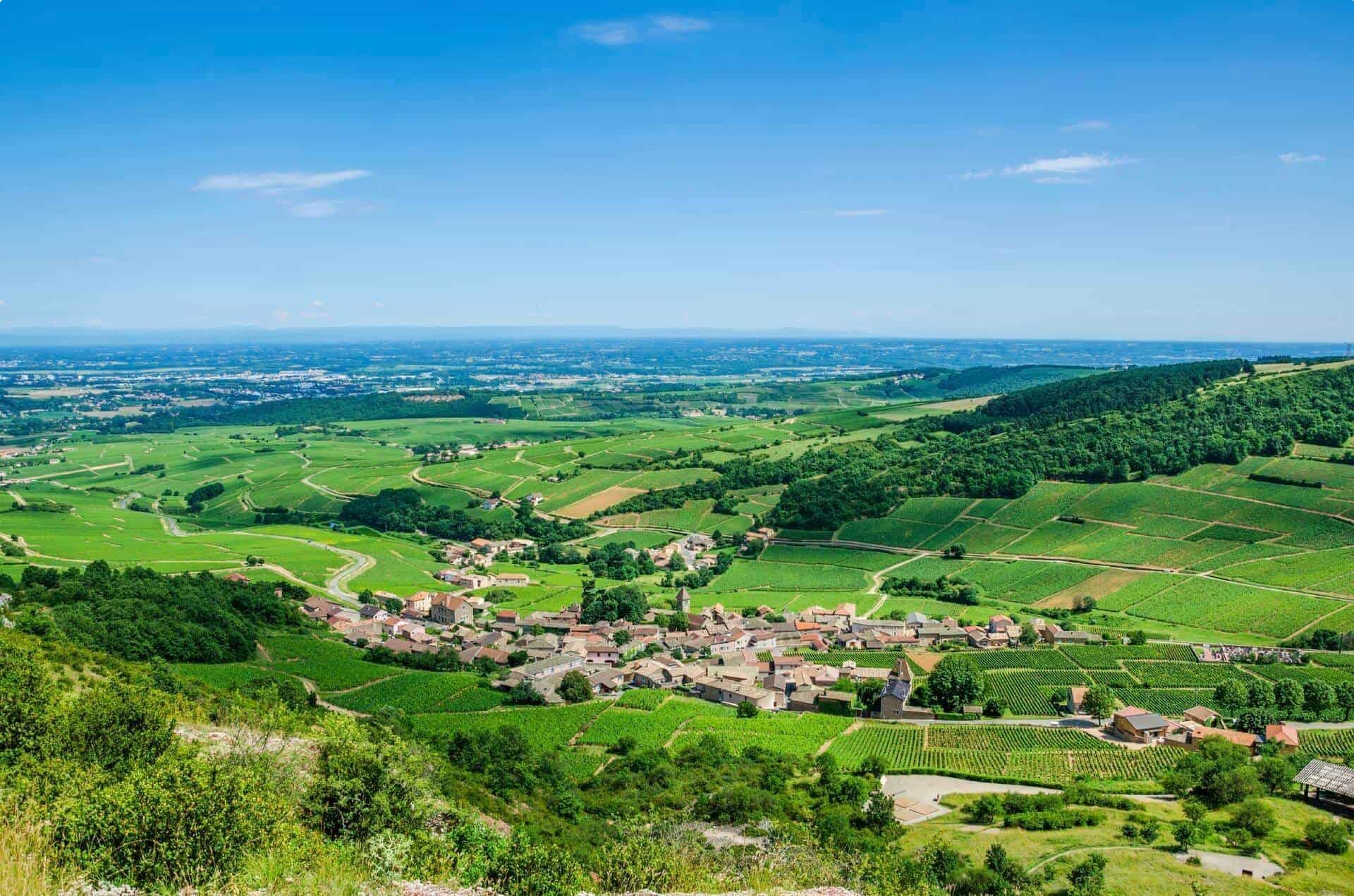
10. Canal-boat in Burgundy
Once a strongly independent Duchy - the rival of the kingdom of France - Burgundy now considers itself to be the heart of France and is one of its richest provinces. Canals criss-cross this region of vineyards, Romanesque architecture, and medieval villages. This makes canal boating a perfect way to explore some of its quintessential villages, including Dijon and Beaune. Today, Burgundy prides itself on being the ‘gastronomic capital of France’. It is truly world famous for the quality of its wines and gastronomy.
Burgundy is located on the great trade route linking northern Europe to the Mediterranean. Upper and Lower Burgundy form the two major areas of the region. Upper Burgundy is famous for its scenery and also for poultry, beef and pork. Lower Burgundy (the northern part of the region) is a plateau of Jurassic limestone dissected by the Yonne River and is famous for its wines.
Packages for tours of France
Odyssey Traveller Australia's all inclusive French vacation packages provide unique experiences for senior travellers. Our La Belle France small group escorted history tours for seniors is perfect for singles and couples seeking a trip to France that takes you off the beaten track. Learn about the country's history from an experienced guide. Book your France tour with the specialists in educational travel. If you’re keen to experience our guided tours of France, please call or send an email. We'd love to hear from you! For all Odyssey's French travel packages click here.
About Odyssey Traveller

We specialise in educational small group tours for seniors, typically groups between six to 12 people from Australia, New Zealand, USA, Canada and Britain. Our maximum number of people on a tour is 18 mature aged travellers. Typically, our clients begin travelling with us from their mid 50’s onward. But be prepared to meet fellow travellers in their 80s and beyond! Both couples and solo travellers are very welcome on our tours. We have some 150 tours and offer 300 scheduled departures on offer each year. Odyssey has been offering this style of adventure and educational programs since 1983.
Odyssey Traveller is committed to charitable activities that support the environment and cultural development of Australian and New Zealand communities.
Odyssey Traveller scholarship for Australia & New Zealand University students.
We are also pleased to announce that since 2012, Odyssey has been awarding $10,000 Equity & Merit Cash Scholarships each year. We award scholarships on the basis of academic performance and demonstrated financial need. We award at least one scholarship per year. We’re supported through our educational travel programs, and your participation helps Odyssey achieve its goals. Students can apply for the scholarship by clicking on this link to find out more details.
Join our loyalty program when you join an international small group tour.
Every International small group tour taken typically contributes to your membership level in our Loyalty Program for regular travellers. Membership of the alumni starts when you choose to take your first international small group tour with Odyssey Traveller, discounts in tour pricing for direct bookings accrue from your third tour with Odyssey Traveller. To see the discounts and benefits of being a Bronze, Silver, Gold, and Diamond alumni member with us, please see this page.
For more information on Odyssey Traveller and our educational small group tours, visit and explore our website, and remember to visit these pages in particular:
- Terms and conditions applicable for booking an Odyssey Traveller tour.
- FAQ's about Odyssey Traveller
Alternatively, please call or send an email.


